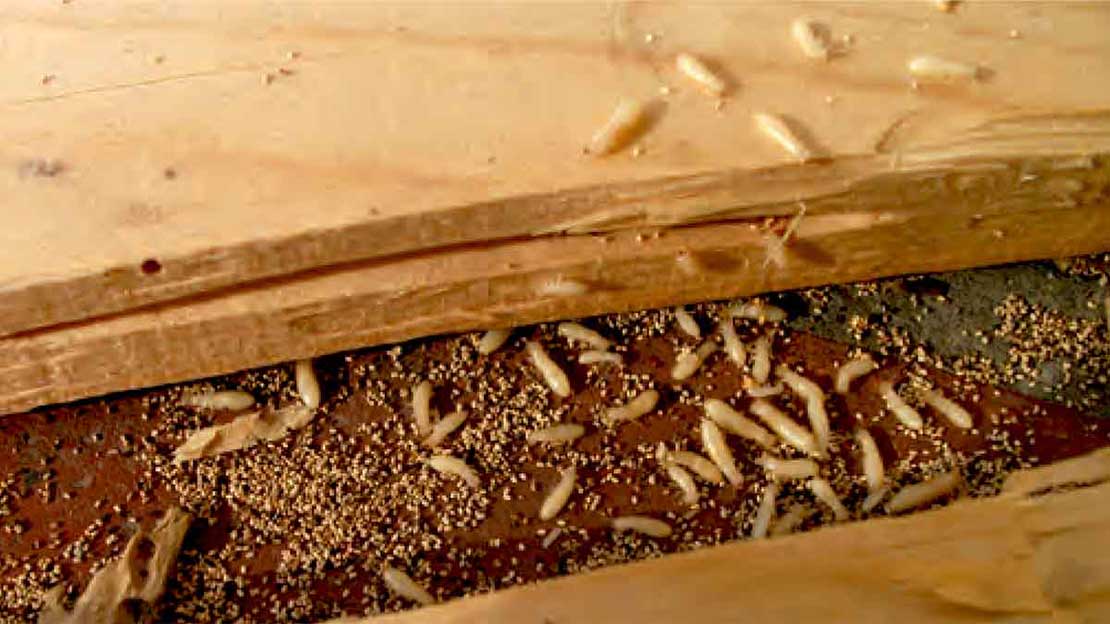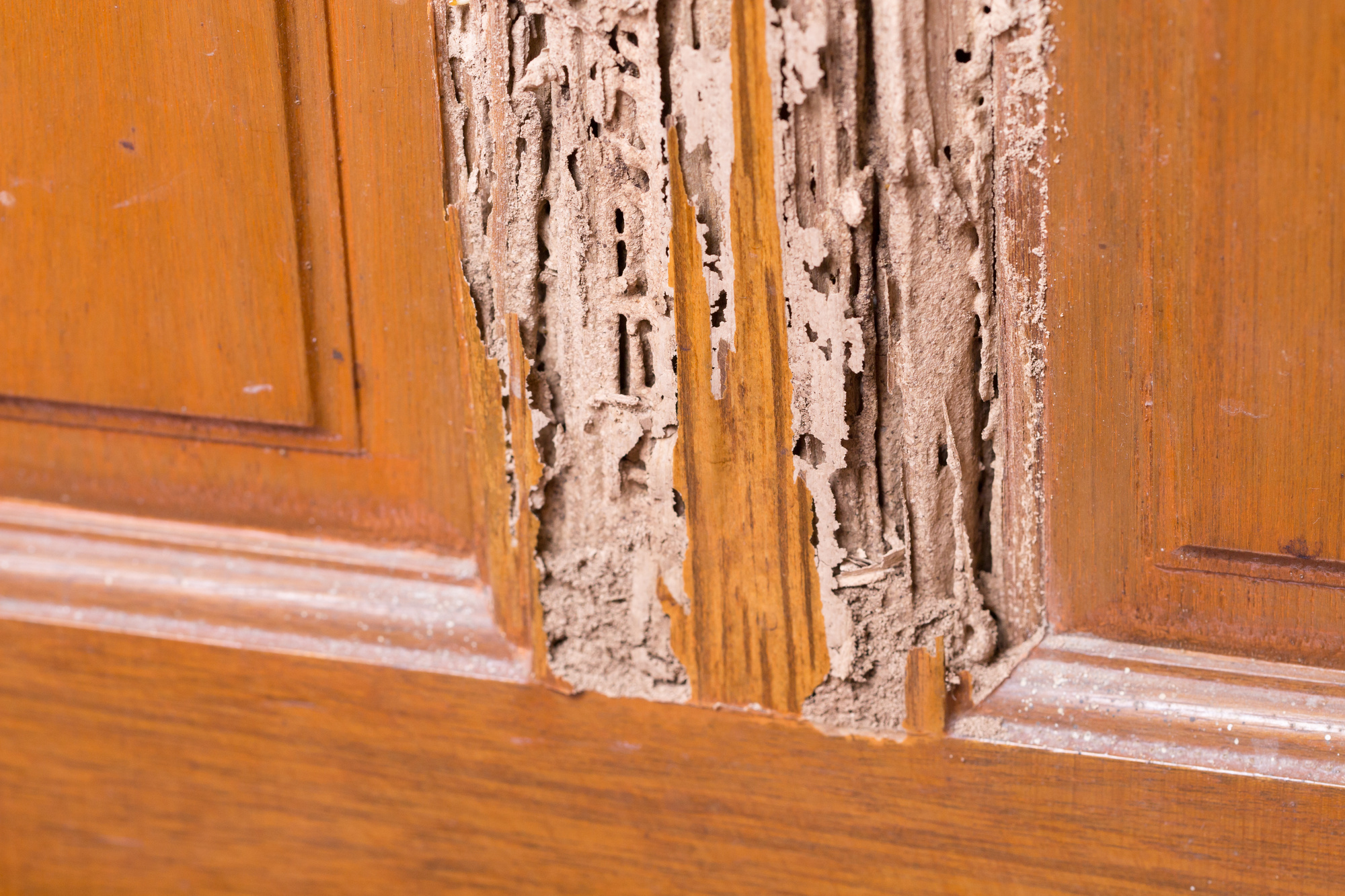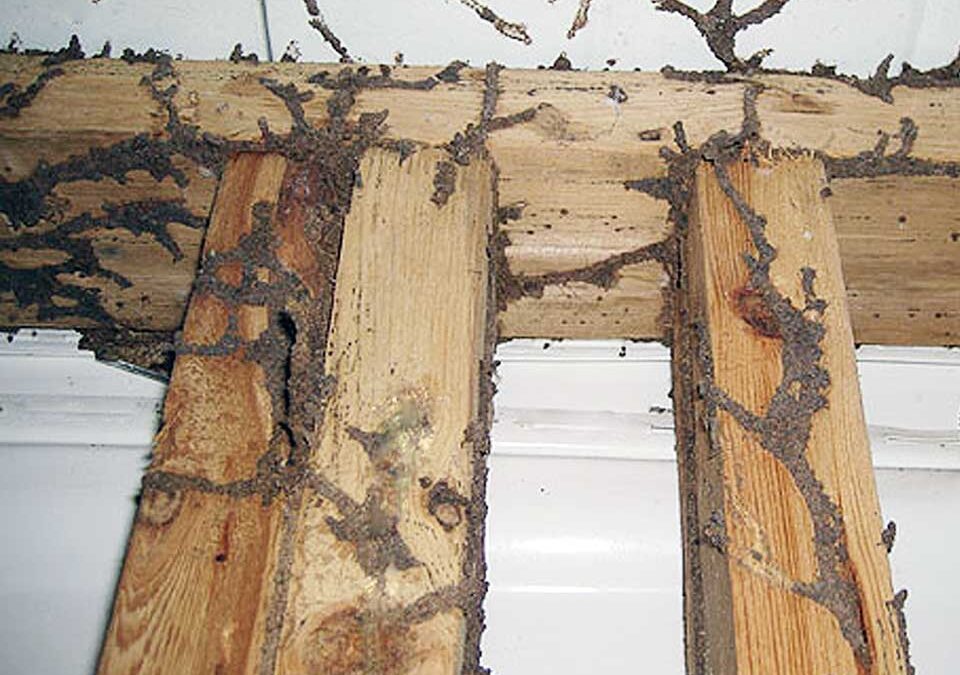Florida’s subtropical climate—featuring generous warmth, high humidity, and mild winters—provides prime conditions for termites to remain active year-round. Unlike colder states where freezing temperatures naturally curb or halt termite breeding, Florida’s gentle winter months rarely slow these wood-destroying insects. In communities such as Lehigh Acres—where suburban homes, commercial buildings, and surrounding farmland meet—termites can infiltrate unnoticed, silently tunneling into wooden beams, support structures, or other cellulose-based materials. This service page uncovers why termites flourish in Florida, key signs of an infestation, and why a professional termite exterminator is crucial to preserving your property’s value and integrity.
Whether you manage a single-family residence in Lehigh Acres or own multiple properties in Immokalee or Labelle, quick identification and swift action in the face of termite invasions protect your investment, ensure occupant safety, and spare you from expensive, time-consuming repairs down the road.
Why Termites Thrive in Florida
Mild Winters and Continuous Warmth
In colder areas, extended freezes kill off or suppress termite colonies for months. Florida’s mild winter rarely drops to subfreezing levels for long, letting termites feed and breed continuously. Indoors, climate control keeps structures comfortable year-round, erasing any seasonal slowdown. As a result, termite populations in Florida often expand faster and remain more resilient than in regions with frigid weather.
High Humidity and Moisture
Termites, especially subterranean types, depend on moisture in the soil to survive. Florida’s regular rainfall, humid air, and potential for standing water near foundations sustain these insects. Damp or poorly drained soil around buildings, coupled with indoor leaks or condensation, attracts termites seeking stable environments to tunnel and feed on wood.
Plentiful Wood Sources
Homes and businesses in Lehigh Acres, Immokalee, or Labelle often include wooden framing, trim, or decorative elements. Exterior wooden fences, mulch beds, or garden borders also provide termite feeding opportunities close to property exteriors. Any direct contact between wood and soil—like unprotected porch posts—can serve as a direct invitation for termites.
Rapid Colony Growth
Termites live in large colonies, with queen termites laying numerous eggs daily. Once established, workers continually forage for new wood sources, gnawing unseen through interior beams, subfloors, or even hidden cracks in walls. Without intervention, a single colony can cause significant damage over time, compromising structural safety and requiring extensive repairs.
Frequent Building and Goods Movement
Florida’s construction growth, property sales, and importation of wooden materials (like pallets or crates) can inadvertently spread termite colonies from one site to another. If a piece of infested wood furniture or shipping material goes unchecked, termites can move into a new building, continuing their destructive cycle unless detected early.

Telltale Signs of a Termite Infestation
- Mud Tubes
- Subterranean termites build pencil-thin tubes of soil and saliva along foundation walls, crawl spaces, or basement edges.
- These tubes connect colonies in the soil to wooden structures above, protecting termites from light and open air.
- Subterranean termites build pencil-thin tubes of soil and saliva along foundation walls, crawl spaces, or basement edges.
- Discarded Wings
- Swarming termites shed their wings after mating flights, leaving translucent piles around windowsills or baseboards.
- Spotting these wings often signifies a newly formed colony settling in nearby.
- Swarming termites shed their wings after mating flights, leaving translucent piles around windowsills or baseboards.
- Hollow or Blistered Wood
- Tapping suspicious wood (door frames, window sills) that sounds hollow may reveal internal termite galleries.
- Blistered paint or warped surfaces can also indicate hidden feeding damage beneath.
- Tapping suspicious wood (door frames, window sills) that sounds hollow may reveal internal termite galleries.
- Drywood Termite Droppings (Frass)
- Drywood species expel tiny, pellet-like droppings often found in small piles, resembling sawdust or coffee grounds.
- These pellets appear near infested wooden items or small holes in wooden surfaces.
- Drywood species expel tiny, pellet-like droppings often found in small piles, resembling sawdust or coffee grounds.
- Swarming Insects
- Winged termites (alates) typically swarm in warm, humid conditions, forming new colonies.
- If you notice a termite swarm indoors or near your property, it’s likely a colony is establishing itself.
- Winged termites (alates) typically swarm in warm, humid conditions, forming new colonies.
- Sticking Doors or Windows
- As termites hollow out frames, wood may swell or warp, causing doors or windows to jam or stick unexpectedly.
- Combined with other clues, this subtle shift can confirm termite tunneling activity.
- As termites hollow out frames, wood may swell or warp, causing doors or windows to jam or stick unexpectedly.
Risks of Ignoring Termites
Severe Structural Damage
Termites quietly eat wood from the inside, weakening support beams, flooring, or roofing elements. Over time, this undermines a building’s integrity, risking sagging floors or unexpected collapses if left unfixed.
Decreased Property Value
Properties with known termite damage may face reduced buyer interest or require costly repairs before transactions. Even after treatment, some potential buyers remain wary of significant past infestations, affecting negotiations or final sale prices.
Continuous Colony Growth
Termites expand their networks unceasingly under warm, humid conditions. If an infestation remains unnoticed or dismissed, colonies can spread to adjacent properties or deeper into structural areas, making eventual removal more complex and expensive.
Safety and Health Concerns
While termites don’t transmit diseases like some pests, structural damage caused by long-term feeding can endanger occupants—especially under strain from storms or heavy loads. Mold or mildew might also form in termite-damaged, moisture-laden wood.
Financial and Emotional Stress
Major termite damage can force partial building closures, occupant relocations, or large-scale renovations. Combined with repeated treatments, occupant or business operations might endure significant disruption and expense until termites are fully eradicated.
Why a Professional Termite Exterminator Is Essential
Skilled Inspections
A termite exterminator checks baseboards, crawl spaces, attics, or exterior wood elements, often using specialized tools like moisture meters or infrared cameras. They differentiate between subterranean, drywood, or Formosan termites, crafting a solution tailored to each species’ nesting habits and the property’s condition.
Targeted Treatment Methods
DIY sprays might kill visible termites, but rarely eliminate the hidden colony. Professionals offer:
- Soil Barriers: Trenching or injecting termiticides around foundations for subterranean colonies.
- Bait Systems: Placing in-ground baits that worker termites consume and distribute within the colony.
- Fumigation: Tenting and treating the entire structure with lethal gas for extensive drywood termite infestations.
- Spot Treatments: Injecting or foaming termiticides directly into localized drywood or subterranean problem areas.
Monitoring and Prevention
After initial extermination, many professionals schedule routine inspections, ensuring no new mud tubes or discarded wings indicate a returning colony. Occupants receive guidance on avoiding future infestations—like reducing moisture or limiting direct soil-wood contact—preserving results in Florida’s termite-friendly conditions.
Safety and Expertise
Misapplied chemicals can endanger occupants, pets, or beneficial insects. Licensed exterminators follow strict guidelines for termite product usage, ensuring termite kills with minimal harm to people or the environment. Their experience also lets them navigate tight crawl spaces or attics safely and thoroughly.
Warranty or Service Plans
Some termite exterminators offer warranties or service agreements, providing re-treatments if termites reappear within a set period. This added security guards property owners against potential reinfestations without incurring large additional costs.

Typical Methods for Termite Treatments
- Inspection and Colony Identification
- Technicians locate signs like mud tubes, frass, or hollow wood, determining colony type—subterranean vs. drywood, for instance—and infestation magnitude.
- This step shapes whether fumigation, soil termiticide barriers, or localized spot treatments are best.
- Technicians locate signs like mud tubes, frass, or hollow wood, determining colony type—subterranean vs. drywood, for instance—and infestation magnitude.
- Soil Termiticide Barriers
- Often used for subterranean termites, professionals trench or inject a termiticide around foundations.
- Termites crossing treated soil pick up or ingest the poison, eliminating workers and eventually the colony.
- Often used for subterranean termites, professionals trench or inject a termiticide around foundations.
- Bait Stations
- In-ground stations containing slow-acting toxins placed near foundations or known foraging paths.
- Worker termites feed on the bait, carrying lethal doses back to their colony mates.
- In-ground stations containing slow-acting toxins placed near foundations or known foraging paths.
- Fumigation (Tenting)
- For widespread drywood infestations, the entire structure is sealed under a tent, introducing a fumigant that permeates walls and attics.
- Occupants vacate temporarily, returning after it’s confirmed safe and termite-free.
- For widespread drywood infestations, the entire structure is sealed under a tent, introducing a fumigant that permeates walls and attics.
- Spot Treatments
- For smaller colonies, foams or injections of termiticides in localized beams or wall voids can suffice.
- Technicians monitor these treated areas over time to confirm no hidden expansions remain.
- For smaller colonies, foams or injections of termiticides in localized beams or wall voids can suffice.
- Moisture Management
- Repairing leaks, improving drainage, or eliminating standing water near foundations helps deter subterranean termite infiltration.
- Drier conditions make wood less inviting to future termites.
- Repairing leaks, improving drainage, or eliminating standing water near foundations helps deter subterranean termite infiltration.
- Scheduled Follow-Ups
- Some termite eggs or hidden branches of the colony might linger. Re-checking weeks or months later ensures no signs of re-infestation appear.
- Occupant vigilance (like scanning door frames or noticing mud tubes) also speeds detection of early recurrences.
- Some termite eggs or hidden branches of the colony might linger. Re-checking weeks or months later ensures no signs of re-infestation appear.
Service Areas: Lehigh Acres, Immokalee, Labelle
Termites can infiltrate structures anywhere in Florida’s environment—from rural farmland to bustling suburban neighborhoods. This page emphasizes solutions in or near Lehigh Acres, a growing community in southwestern Florida. We also offer termite exterminator services in:
- Immokalee: Agriculture-heavy zones and frequent produce transport can inadvertently spread termites in crates, pallets, or farm structures.
- Labelle: A smaller city blending older homes with newer builds, each at risk if leftover moisture or uncovered wooden elements remain exposed to moist soil.
Regardless of location, Florida’s mild winter months allow termites to remain highly active. Prompt occupant detection, occupant-driven moisture control, and specialized professional treatments remain integral to halting termite spread.

Why Choose Us
Florida-Centered Methods
We adapt termite control to southwestern Florida’s climate, focusing on subterranean or drywood species commonly encountered around Lehigh Acres, Immokalee, and Labelle. Our approach unites occupant-driven modifications—like sealing cracks or eliminating leaks—with advanced treatments for thorough termite removal.
Detailed Inspections and Tailored Plans
Our technicians examine walls, attics, basements, or yard edges for mud tubes, frass, or damaged wood. By confirming colony type and severity, they craft a plan—from bait stations or soil barriers for subterranean types to fumigation for severe drywood cases—ensuring lethal coverage across all hidden pockets.
Safe, Targeted Solutions
Whether injecting termiticides in soil or using fumigation tents, we abide by regulations and occupant safety guidelines. This precision kills termites while keeping families and pets out of harm’s way. We also advise on improvements that reinforce dryness or reduce wood-soil contact, boosting long-term resilience.
Follow-Up and Ongoing Protection
Many professional solutions include warranties or service plans, scheduling re-checks or re-treatments if new termite signs appear within a certain timeframe. This continuity confirms that early-stage colonies or newly arrived alates fail to gain traction.
Next Steps
Suspecting mud tubes along your foundation, noticing hollow-sounding wood, or discovering discarded termite wings near window sills? Contact us to learn more or schedule your service. Our termite treatments in Lehigh Acres, Immokalee, and Labelle integrate thorough inspections, proven soil or fumigation strategies, plus occupant-driven prevention—ensuring a stable defense against these destructive pests in Florida’s termite-friendly climate.
Act swiftly to forestall deeper structural damage, repeated treatments, and occupant anxiety about hidden wood compromise. Trust our Florida-oriented expertise to identify, eliminate, and prevent termite colonies, preserving your home or business for years of safe, worry-free living.
Maintaining a Termite-Free Property
Once professional efforts remove or prevent termite colonies, consistent vigilance reduces reinfestation:
- Reduce Wood-to-Soil Contact
- Keep any wooden elements (porches, fences) raised above ground.
- Avoid storing firewood or lumber piles directly on the soil near exterior walls.
- Keep any wooden elements (porches, fences) raised above ground.
- Fix Moisture Problems
- Repair leaky pipes, damp basements, or dripping air conditioner lines.
- Improve drainage around foundations by grading soil away, ensuring minimal pooling near walls.
- Repair leaky pipes, damp basements, or dripping air conditioner lines.
- Inspect Wood Frames and Trim
- Every few months, tap or check door frames, window sills, or beams for any blistering paint or hollow sounds.
- Catching minor signs of termite entry early prevents major structural harm.
- Every few months, tap or check door frames, window sills, or beams for any blistering paint or hollow sounds.
- Use Treated or Painted Wood
- Opt for pressure-treated, painted, or sealed wood in decks or exterior expansions.
- Termites prefer untreated, moist timber, so protective coatings deter them from feeding.
- Opt for pressure-treated, painted, or sealed wood in decks or exterior expansions.
- Annual Professional Checkups
- Scheduling routine inspections ensures any returning termites are addressed at the earliest stage.
- If neighbors report infestations, expedite your own check, preventing colony spread to your property.
- Scheduling routine inspections ensures any returning termites are addressed at the earliest stage.
- Dispose of Debris
- Termites can colonize rotting stumps, fallen limbs, or leftover construction scraps.
- Removing these items or stacking them away from structures limits bridging from yard to building.
- Termites can colonize rotting stumps, fallen limbs, or leftover construction scraps.
- Stay Alert After Storms
- Severe weather might introduce moisture into attics or walls, encouraging subterranean infiltration.
- Dry out soaked areas promptly to maintain wood dryness.
- Severe weather might introduce moisture into attics or walls, encouraging subterranean infiltration.
By combining occupant diligence—reducing moisture, removing wood-soil contact—and expert extermination when necessary, property owners in Lehigh Acres, Immokalee, and Labelle can keep termites at bay despite Florida’s year-round mild climate. Responsible upkeep and swift professional responses ensure your home or business remains sturdy, pest-free, and safe from costly termite disruptions.
